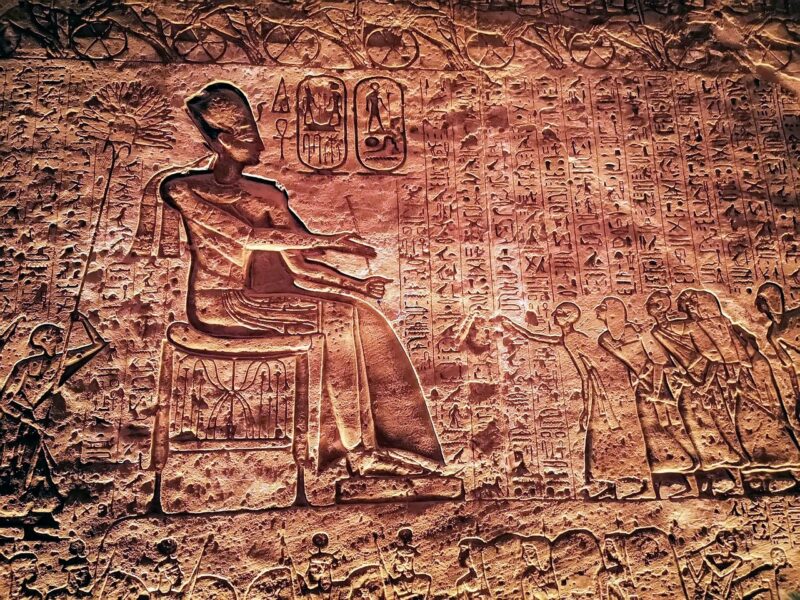Ancient Writings That Tell Stories of UFO Sightings in the Ancient World
November 15, 2024

The phenomenon of unidentified flying objects (UFOs) has captivated humans for centuries. While the modern discourse surrounding UFOs first gained traction in the mid-20th century, the history of these mysterious aerial appearances traces back to ancient civilizations. From the hieroglyphs of Ancient Egypt to the writings of Mesopotamian cultures, many ancient texts describe strange objects soaring across the skies. This article delves into intriguing instances of UFO sightings chronicled in ancient writings and explores what these accounts suggest about humanity’s fascination with the unknown.
1. UFOs in Ancient Egypt
One of the earliest reported cases of UFO sightings can be traced back to ancient Egypt, where a wealth of inscriptions can be found in tombs and temples. The Pyramid Texts, dating back to around 2500 BC, contain references to mysterious glowing objects.
For instance, the hieroglyphics depict objects they referred to as “fiery discs” or “gods of the heavens,” suggesting the ancient Egyptians perceived these phenomena as divine or celestial. Some scholars interpret these descriptions as potential accounts of UFO sightings, perhaps reflecting their encounters with something extraterrestrial or advanced technologies of that era.
Another fascinating example is the artifact known as the “Tulli Papyrus,” which allegedly recounts an event during the reign of Pharaoh Thutmose III. The papyrus describes the appearance of circular objects in the sky, flitting about and moving in ways that defied the technology of the time. While the existence of the Tulli Papyrus is contested, its content nevertheless raises questions about early humanity’s encounters with the unexplained.
2. The Book of Ezekiel and the Wheels in the Sky
The Hebrew Bible, particularly the Book of Ezekiel, has long been a focal point for those fascinated with ancient UFO sightings. In Ezekiel 1:4-28, the prophet Ezekiel describes a vision of a celestial chariot composed of wheels within wheels, surrounded by beings that gleamed like burnt bronze. This depiction has drawn attention for its vivid imagery that many modern UFO enthusiasts argue resembles a spacecraft.
The “wheels” were described as spinning and possessing the ability to move in any direction without turning. Moreover, Ezekiel recounted that these wheels emanated a dazzling light. Some authors and researchers propose that these descriptions could be interpreted as encounters with a technologically advanced aircraft or extraterrestrial beings. Ezekiel himself attributes this vision to divine origin, indicating that interpretations of similar accounts could vary widely.
3. Ancient Roman Texts and UFOs
The Roman Empire experienced its share of exceptional celestial phenomena. Notable Roman historians such as Livy and Tacitus addressed peculiar unidentified phenomena in their writings. For instance, Livy chronicles an occurrence in 218 BC, describing an incident where a “large ball of fire” appeared in the sky above the Roman army, prompting widespread fear and speculation among the soldiers.
Moreover, Tacitus elaborates on similar instances, asserting that strange lights were witnessed in the skies during turbulent times. The interpretation of these accounts leads to compelling discussions about how Romans perceived these strange sightings. Were they omens? Whispers of divine messages? Pomponius Mela, a Roman geographer, described curious aerial occurrences, drawing correlations between these natural events and the interventions of the gods.
Research into these ancient Roman accounts suggests that unusual aerial phenomena were recorded and noted by credible authorities, raising the question of humanity’s enduring interest in life beyond our planet.
4. Sumerian Writings and the Epic of Gilgamesh
Sumer, known as one of the world’s first civilizations, has a rich tapestry of mythology and narratives. In the “Epic of Gilgamesh,” ancient Sumerian literature surfaces descriptions of celestial beings that many consider alien-like. The text includes references to massive ships sailing across the heavens, often regarded as an unequivocal nod to interstellar travel.
Another ancient artifact, the “Sumerian King List,” documents reigns that some believe reflect evidence of advanced knowledge or technology bestowed upon humans by extraterrestrial entities. Sumerian culture exhibits complexities in advanced mathematics, architecture, and written language, provoking speculation about their origins and possible otherworldly influences.
Ancient Sumerian cylinders reveal illustrations resembling spacecraft, while ancient artifacts depict beings with elongated skulls and peculiar features. These representations have fueled theories connecting ancient alien civilizations to the UFO phenomenon even in modern narratives.
5. The Mahabharata and Vimanas
Hailing from Indian heritage, the “Mahabharata” is an ancient epic that includes descriptions of flying machines known as “vimanas.” These celestial crafts are described as shimmering vehicles that could travel across vast distances almost instantaneously. The Mahabharata contains passages referencing battles fought from the air, showcasing advanced weaponry and aerial tactics that resemble modern aerial engagements.
Contemporary interpretations of vimanas often align with the concept of UFOs, introducing theories on the sophisticated technologies of ancient societies. Scholars dissect similarities between old texts and reported UFO sightings, drawing parallels regarding the potential for advanced civilizations existing in the eras prior to recorded history.
While scholars typically regard these stories as mythological, enthusiasts theorize that these ancient accounts provide rich depictions of UFO sightings experienced long before the modern age.
Conclusion
Ultimately, ancient writings provide a fascinating glimpse into humanity’s recurring encounters with unexplained aerial phenomena. While historians often attribute these accounts to mythology or misinterpretations of natural events, the persistence of these narratives embodies a deep-rooted human intrigue with the cosmos.
Could the stories of ancient UFO sightings represent humanity’s earliest forays into the question of extraterrestrial life? As we continue to explore our own skies amid modern advancements in technology, the ancient texts remind us that our quest for understanding the unknown stretches far beyond our present day, perhaps hinting at truths woven into the fabric of human history itself.
In this age of relentless questioning about life beyond our planet, revisiting ancient accounts may reveal more than mystical encounters; it might resonate with our shared aspiration to connect with the universe and all its mysteries.







